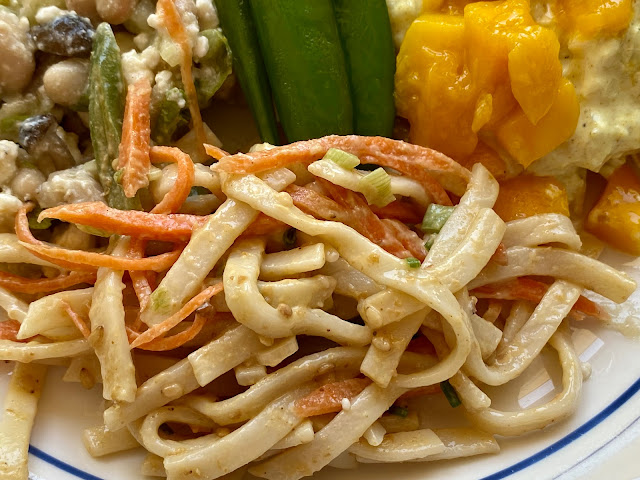Ingredients (makes 12 buns):
Dough
120g (½ cup) Milk (my wife used 1/4 cups evaporated milk, since she had it, and 1/4 cup regular milk)
120g (½ cup) Yogurt, plain unsweetened
2 Eggs (one whole egg + an egg yolk for the dough and the egg white for an egg wash on the final buns.)
45g (3 tbsp + 2 tsp) Sugar
6g (2 tsp) Instant yeast
85g (6 tbsp) Butter, softened
420g (3 ½ cup) All-purpose flour
5g (1 tsp) Fine salt
Filling
370 g Cookie butter (This used up all the available cookie butter)
Glaze
The egg white from the separated egg above.
Sugar
Directions:
Set up the proofer
Set the proofer to 78°F (25°C) and put the water tray in the middle of the warming plate. Pour ¼ cup (60 ml) of water into the tray and place the rack on top of the tray.
Mix the dough:
Using a stand mixer fitted with a dough hook, combine the flour, yeast, sugar and salt in the bowl of the mixer. In a separate bowl, mix the milk, yogurt, and egg, until well combined. Add the wet mixture to the dry. Add the butter. Mix on low speed for 2 to 3 minutes until no dry remains and the butter in incorporated. Turn to medium speed and mix for 7 to 10 minutes until the ingredients form a smooth elastic dough.
1st fermentation: Transfer the dough to a greased bowl and place in the Folding Proofer for 1 to 1 ½ hours until doubled in size.
Roll the dough:
Turn the dough out onto a floured surface. Roll into a rectangle measuring about 10.5" x 16" (27 x 40cm).
With the dough facing you lengthwise, spread filling over the entire surface of the dough.
Spread the cookie butter in a thin layer (#1)
Fold the dough into thirds like a letter. To do so, take the left side and fold it in toward the center. Take the right third of the dough and fold in to the center on top of the fold just made.
Refrigerate it for about 15 minutes which will make it easier to cut and shape.
Roll the dough out again to a 16.5" x 8.5" (42 x 22cm) rectangle (#2). Do the letter fold again and re-roll it out to 16.5” x 8.5” again.
Line two sheet pans with parchment paper. Set aside.
Cut the dough into 12 strips. To do this, mark the dough with 3 lines making 4 section. Then mark each of these 4 sections with 2 lines making a total of 12 sections. Then go back and cut the entire length of the dough where marked (#2). Take one dough strip and twist each end in opposite directions until the entire strip is twisted (#3).
Starting at one end coil the strip to form a circular bun, tucking the tail underneath (#4).
Place on the prepared pan. Repeat until all 12 buns are shaped and placed 6 on each of the 2 trays (#4). (The buns are placed 6 to a tray and each tray is cooked individually. This allows each bun to receive even heat and expand without touching another bun).
Final proof: The cookie sheets do not fit in the proofer. Cover it with a plastic wrap, and place the trays on the towel so they are not resting on the cold table top. Cover with another towel. Allow the buns to rise for about 1 hour.
Glaze the surface: First paint on the egg white then sprinkle on the sugar
Near the end of the proofing time preheat the oven to 375° (190°C).
Bake: Bake the buns at 375°F (190°C) for 18-20 minutes (#6).
My wife is really getting good at forming these swirl/buns. Her idea of using the cookie butter (this is made of chocolate cover cookies) really worked. The buns were sweet but not too sweet with a subtle chocolate flavor and slightly crunchy surface and soft inside.


















































